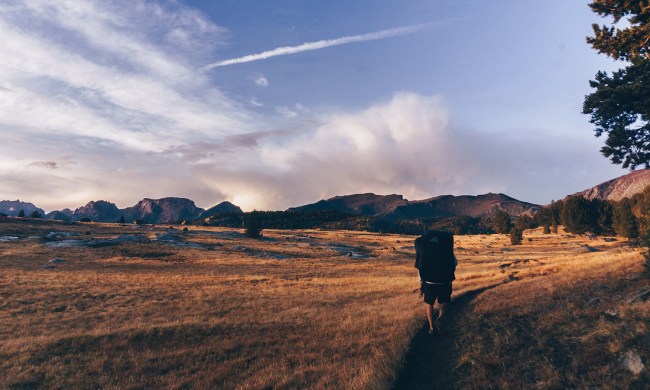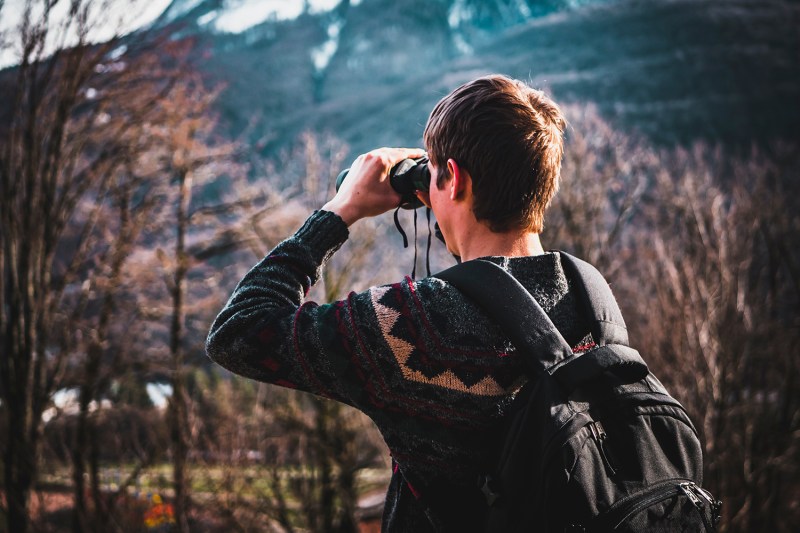
We can agree that seeing things up close is better than seeing things far away, right? No matter what you’re planning — hiking, stargazing, embarking on your first safari — a good set of binoculars can make all the difference. However, buying a decent pair can seem confusing and expensive. Don’t believe the hype. Unless you’re captaining a naval submarine, you needn’t drop three grand on a solid pair.
If you’re new to the world of quality binoculars, it’s easy to get bogged down by intricate specs like BaK4 prisms, refractive indices, and exit pupil diameters. Most first-time buyers can forget all that. The simplest way to compare apples to apples (between manufacturers and within the same manufacturer’s catalog of products) is by the two numbers used to indicate the strength and brightness of each pair.
For example, in an “8×42” pair, the first number indicates the magnification: “8x” would magnify the image by eight. In general, higher is better. At larger magnifications, however, the view can suffer from even the slightest movement. That might not be an issue when you’re stargazing from your back porch or taking a leisurely hike at your nearest national park. It can prove problematic, for example, when you’re Jeeping around Kruger National Park on a lion trek.
The second number indicates the brightness or how much light the lenses let in. The sky is essentially the limit here, although a higher brightness adds more weight. Travel-friendly binoculars typically max out around 28. While this ensures a compact size, it can make for poor visibility in low-light situations. A brightness of 42 tends to be the sweet spot that balances great viewing with a manageable size.
Other features to consider include a rugged housing that keeps water and dust out. A decent carry strap and lens caps with a snug fit are also important, especially if you’ll be spending significant time outdoors. Whatever you’re planning — from backpacking to birding — here are four affordable picks of compact binoculars with excellent viewing.
Athlon Optics Midas 8×42 ED
Best Binoculars Overall
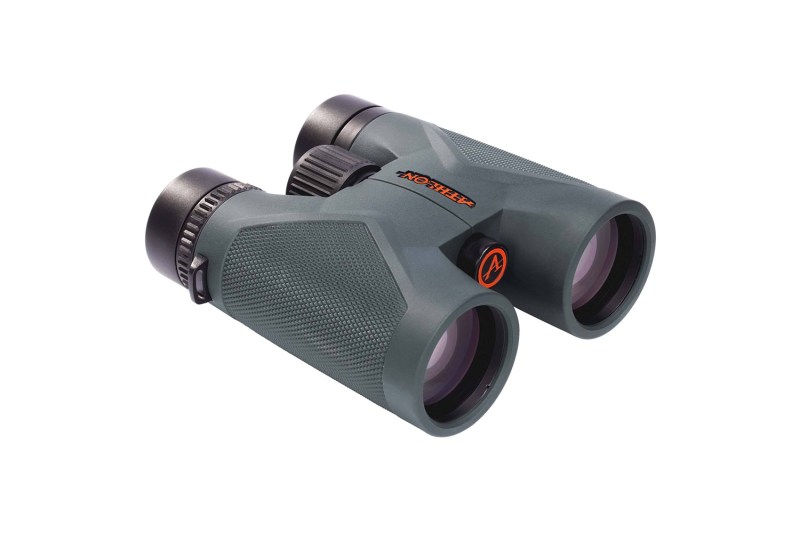
Athlon Optics is relatively new to the world of binocular manufacturing but the Midas line is among the best-reviewed, even compared to competitor products that cost five- to 10-times more. The Midas ED 8×42 binoculars strike a good balance between zoom, brightness, clarity, and portability. At 25 ounces, they’re not the lightest set on the market, but they’re plenty compact to stuff in an average messenger bag or backpack. The multi-coated optics help keep the glass safe from scratches, dust, and just about anything else you might encounter in the field. The best part is that they’re priced right at less than $300.
Celestron TrailSeeker 8×42
Best for Your Budget
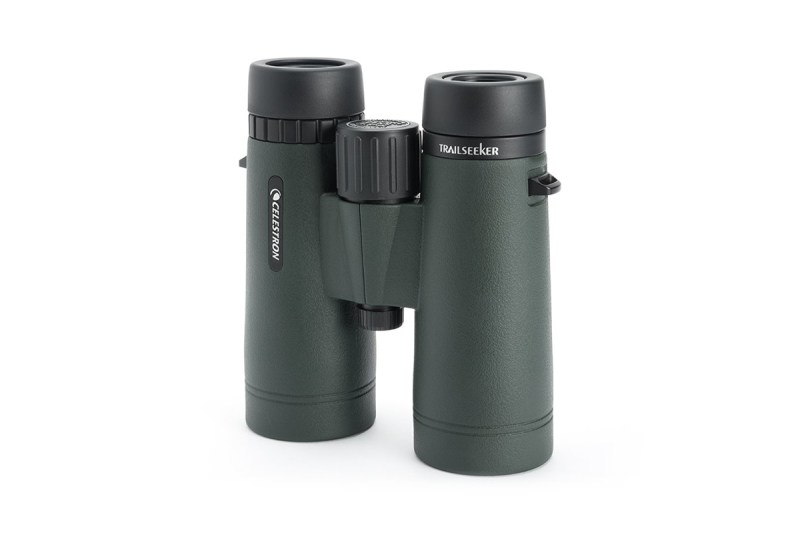
The TrailSeeker 8×42 binoculars from Celestron are a solid choice for many of the same reasons as the Athlon Optics Midas. The magnesium alloy body is durable and lightweight, the optics are multi-coated for better resolution and viewing, and they’re tripod-adaptable to minimize shake whether you’re hiking or on safari. The field of vision gets a bit blurry around the edges, but at two-thirds the price of the Midas, average binocular buyers are unlikely to notice or care.
Nikon ProStaff 7S 10×42
Best for Brand-Name Value
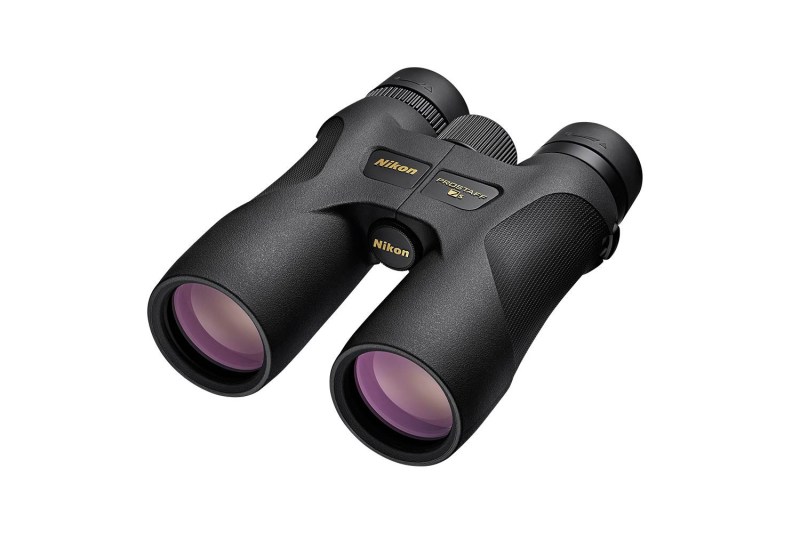
While Celestron is well-recognized in the world of binoculars, those new to the industry might appreciate a more generally recognizable brand name. Most folks know Nikon for excellent cameras and it brings the same panache, experience, and quality to binoculars. The company’s entry-level ProStaff line is a great place to start, particularly for first-time buyers. The flagship ProStaff 7S 10×42 is a redesign of the already solid ProStaff 7 model. Notable features include ultra-smooth zooming, water- and fog-proof housing, and a high-grip rubberized frame to make sure they stay put in your hands. For a brand-name pair of binos with 10-times magnification, it’s hard to beat the $200 price tag.
Pentax AD 8×25 WP
Best for Travel
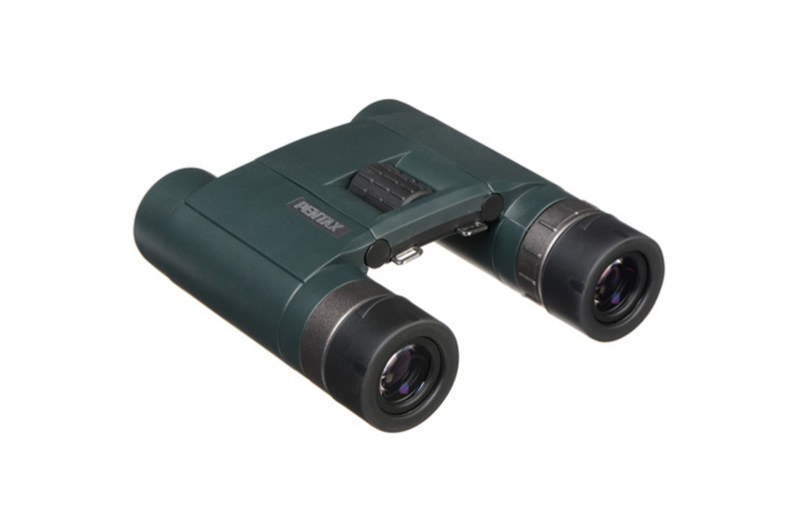
If your main concern is an ultra-compact form factor, the Pentax AD 8×25 binoculars are sized right for travel or day hikes. They’re not as bright as the other three mentioned here. Still, they’re ideal for casual viewing of mountains, landmarks, and occasional wildlife. The waterproof housing also means you needn’t worry about taking them just about anywhere. At less than $100, they’re an ideal blend of size, visibility, and price.
Article originally published April 30, 2019. Last updated to include newer pricing info.

